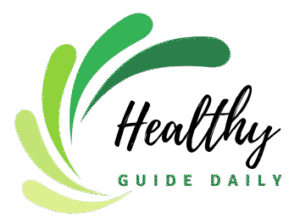That crystal-clear bottled water you’re paying premium prices for contains up to 240,000 invisible plastic particles per liter—along with “forever chemicals”.
Story Highlights
- A single liter of bottled water contains up to 240,000 nanoplastic fragments, 10-100 times higher than previous estimates
- FDA testing detected PFAS “forever chemicals” in bottled water samples, though below current safety thresholds
- Bottled water faces less stringent regulation than tap water, despite its premium pricing and purity marketing
- Health risks from nanoplastics remain largely unknown, but early research links them to heart disease and cancer
The Invisible Contamination Crisis
January 2025 brought a watershed moment for bottled water safety when researchers unveiled detection methods that revealed nanoplastic contamination at unprecedented levels. These microscopic plastic fragments, invisible to the naked eye, infiltrate bottled water during manufacturing, storage, and transport. The discovery shattered previous contamination estimates and exposed a hidden health threat lurking in America’s most trusted beverage.
The timing couldn’t be more concerning. Americans consumed nearly 16 billion gallons of bottled water in 2022, driven by marketing campaigns touting purity and safety. Each sip now carries thousands of plastic particles that accumulate in human tissue, with unknown long-term consequences for public health.
New research reveals what’s really hiding in bottled water https://t.co/WB4gtCrfkZ
— Un1v3rs0 Z3r0 (@Un1v3rs0Z3r0) October 6, 2025
Forever Chemicals Join the Mix
PFAS contamination adds another layer of concern to bottled water safety. The FDA’s comprehensive 2023-2024 testing of 197 bottled water samples detected these “forever chemicals” in multiple products. While concentrations remained below EPA maximum contaminant levels, PFAS persisted in the environment and human body indefinitely, accumulating over decades of exposure.
The regulatory response reveals troubling gaps in consumer protection. Unlike the 2016 FDA survey that found no detectable PFAS, improved testing methods now identify these chemicals at previously undetectable levels. This technological advancement exposes how long consumers unknowingly consumed contaminated products while regulators operated with incomplete data.
Watch: DON’T DRINK The Water! Dangerous Contaminants are Hiding | Dr. Gundry
Regulatory Double Standard Exposed
The bottled water industry operates under a fundamentally different regulatory framework than municipal water systems, creating a troubling paradox for health-conscious consumers. FDA oversight of bottled water lacks the frequency and rigor of EPA monitoring for tap water. This regulatory gap means the premium product marketed as safer than tap water actually faces fewer safety requirements and less frequent testing.
Environment America’s John Rumpler highlights this contradiction, noting that tap water undergoes more stringent regulation despite its lower cost and broader accessibility. The FDA’s minimal bottled water regulations create an environment where contamination can persist undetected for years, as evidenced by the recent nanoplastic discoveries.
Health Implications Remain Murky
The health consequences of chronic nanoplastic and PFAS exposure represent uncharted territory for medical science. Early research suggests nanoplastics may contribute to cardiovascular disease and cancer, but definitive studies remain incomplete. This uncertainty places millions of consumers in an unwitting experiment with their long-term health, particularly concerning for families who exclusively rely on bottled water.
The cumulative effect of consuming 240,000 plastic particles per liter multiplied across years of regular consumption creates an unprecedented human exposure scenario. Unlike traditional pollutants with established safety thresholds, nanoplastics operate in regulatory limbo with no maximum contaminant levels or safety guidelines to protect public health.
Sources:
FDA shares testing results for PFAS in bottled water
The truth about nanoplastics in bottled water
Is tap water safe to drink study
Top 10 emerging contaminants in 2025







